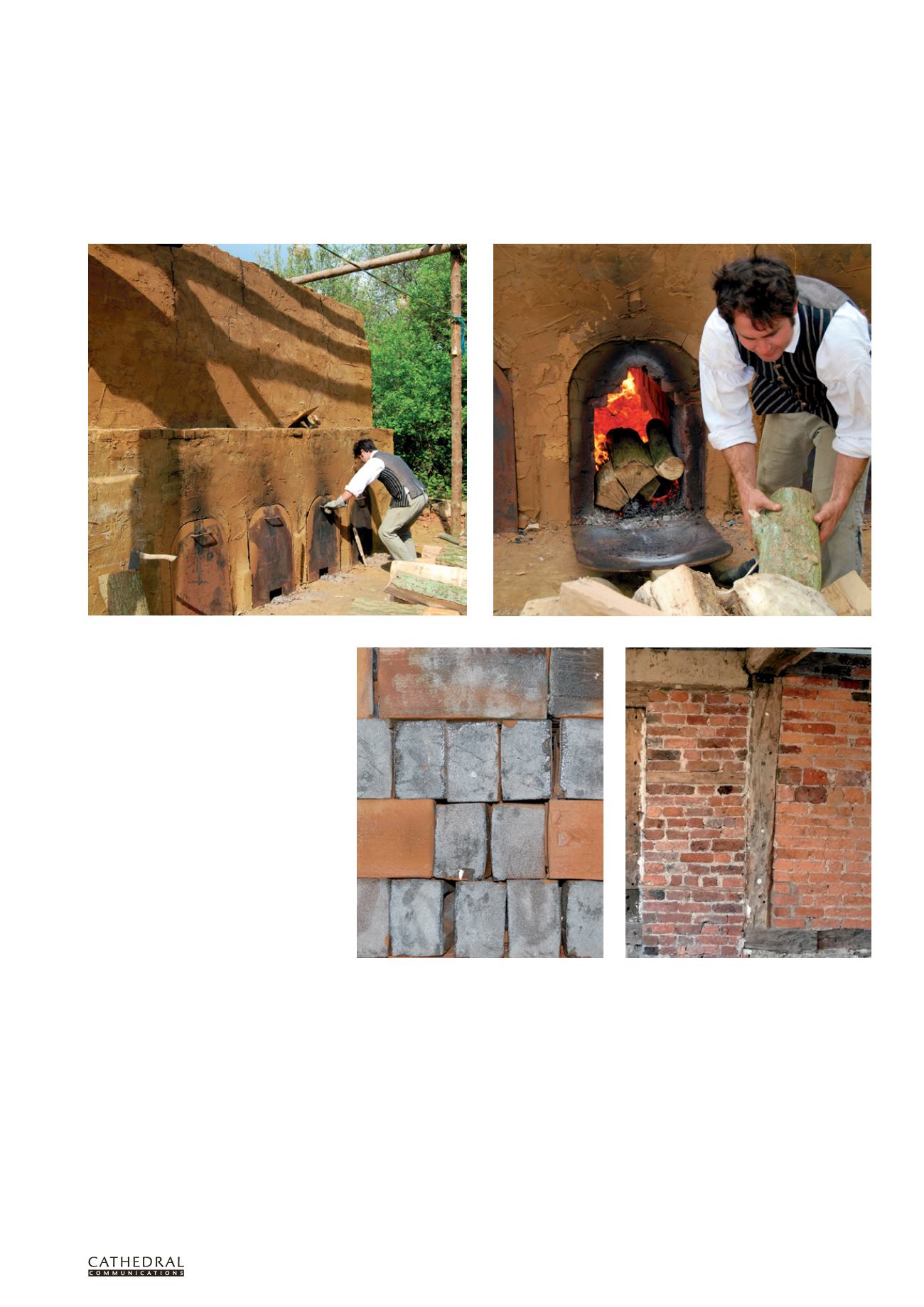

T W E N T Y S E C O N D E D I T I O N
T H E B U I L D I N G C O N S E R VAT I O N D I R E C T O R Y 2 0 1 5
1 0 1
3.2
STRUCTURE & FABR I C :
MASONRY
TRADITIONAL BRICKWORK
GEOFF MAYBANK
B
RICKS ARE
so common that we hardly
spare them a glance, but in areas of
the country with no suitable local
building stone, brick has been the most
important durable building material since
Roman times. Brick is still favoured as
the material of choice for many new-build
projects, especially housing developments.
Despite being renowned for its durability,
problems in brickwork can be very serious.
They are often caused by subsidence, settlement
or bowing, but more commonly are the result
of poor or incorrect maintenance. Repointing
with the wrong type of mortar, inappropriate
cleaning by grit blasting or chemicals, or the
application of water-repellent coatings, can all
cause problems. Use cement renders externally,
the wrong type of plaster internally or even the
wrong paint system and you’ll have a vexing
situation to deal with.
This article provides an introduction to
the repair and maintenance of traditional
and historic brickwork, focussing on solid
brickwork constructed with soft, porous lime
mortars, as found in pre-20th century buildings
and structures. Although many of the issues are
common to larger buildings and structures, the
emphasis here is on houses.
HISTORIC DEVELOPMENT
Although brick construction in Britain dates
from the Roman period, there is little evidence
of significant use of the material after that
until the late-13th century (Little Parnham
Castle, Suffolk, for example). Technology
probably developed under the influence of
the Hanseatic League, trading from the Baltic
through ports such as Hull, Kings Lynn and
London, and decorative brickwork became
briefly fashionable in the Tudor period. Initially
used for large, important structures, brick
eventually took over from timber in many parts
of England for the construction of ordinary
vernacular buildings. However, the material did
not become a substitute for stone until much
later, when transport links by canal and rail had
spread across the country.
Medieval brick sizes generally ranged from
about 8½ x 4 x 2 inches to 10 x 5 x 2 inches, and
dimensions of 9 x 4.5 x 2.5 were stipulated in a
charter of 1571. The size was geared to a man’s
hand, the length being twice the width, the
width being twice the height.
Clay was dug and allowed to weather over
winter, or sometimes over several winters,
until it had been broken down by frost action.
This reduced the likelihood of the bricks
warping when fired. They were handmade,
flat on all sides and somewhat irregular in
shape. The clay was hand-pressed into wooden
A wood-fired clamp at HG Matthews
Traditional clamp-fired bricks made by HG Matthews,
their ends blackened by exposure to hot flue gasses in
the wood fired clamp
16th and 17th century infill panels in a timber
framed out-building
















